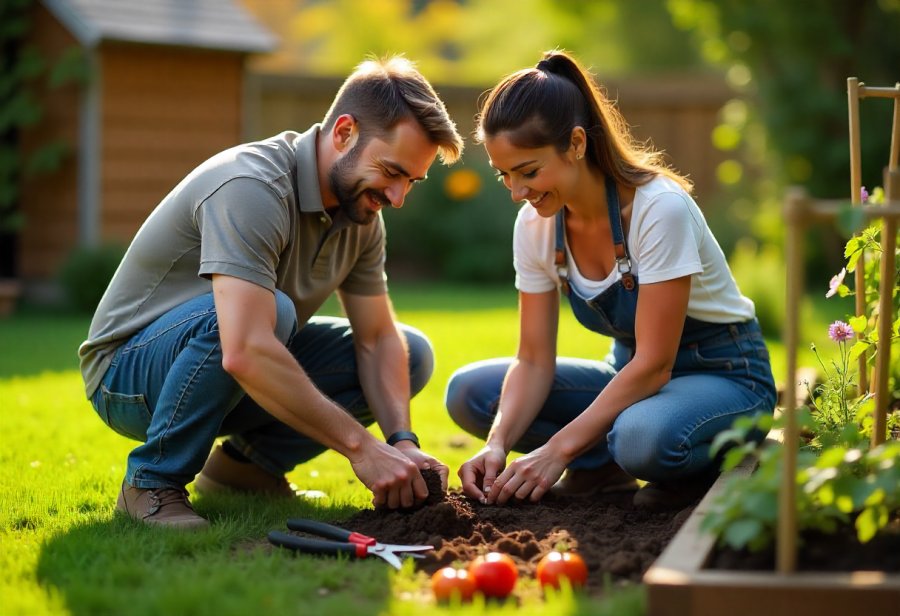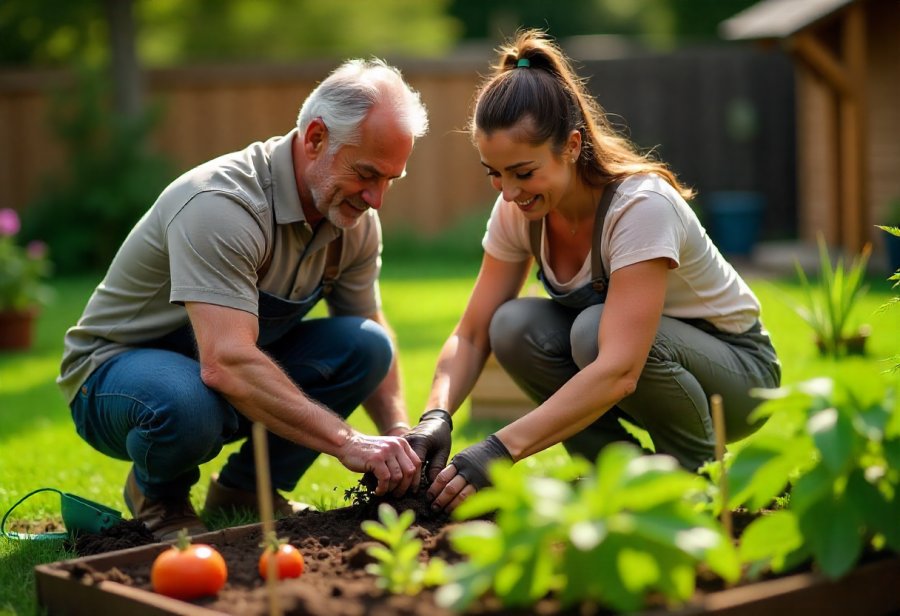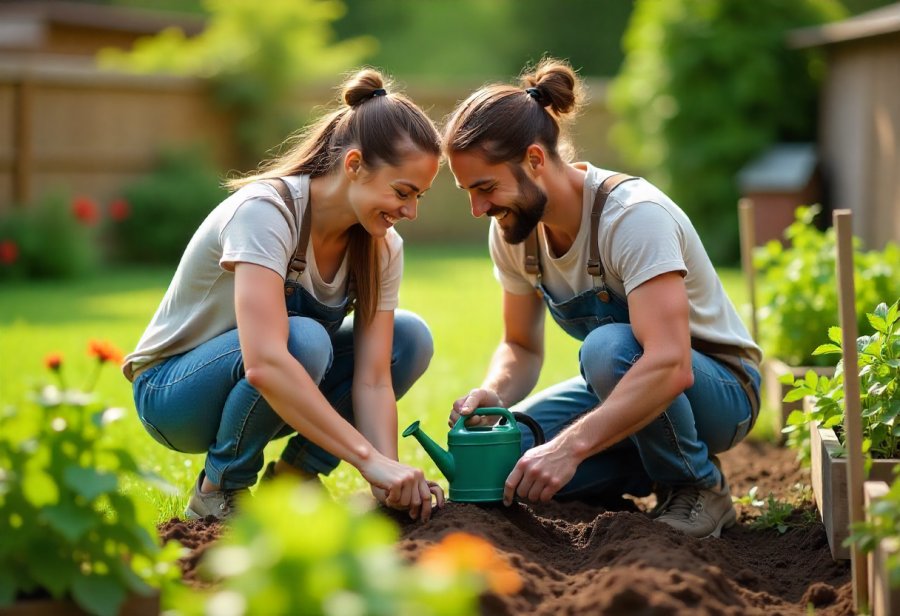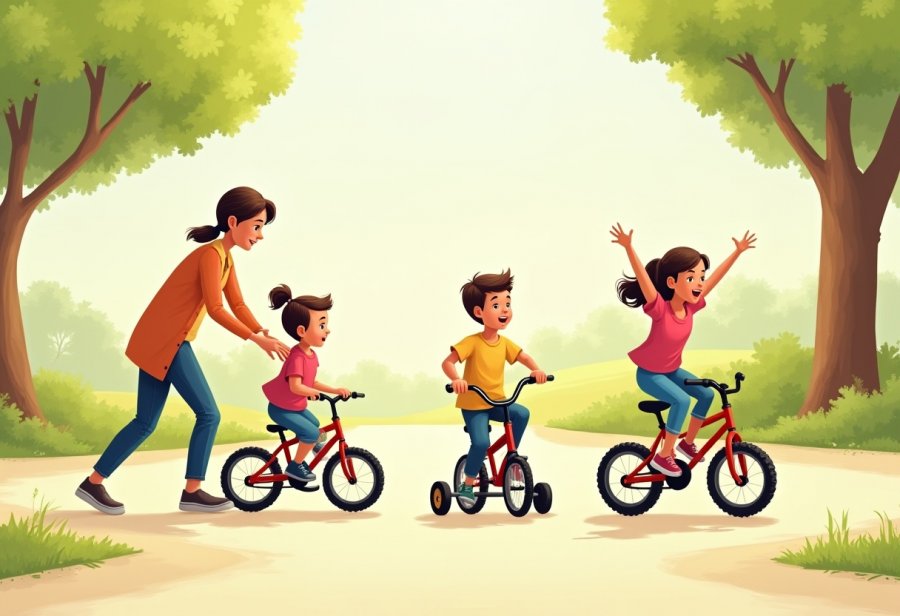In a world dominated by screens and digital noise, the simple act of tending a shared garden offers more than just growing plants—it becomes a profound pathway to emotional healing and deeper connection. Can soil and sweat truly mend wounds and foster genuine bonds? This inspiring exploration reveals how gardening transforms from a solitary hobby into a therapeutic ritual that cultivates patience, resilience, and trust. As participants work side-by-side, they experience tangible moments of achievement that reinforce teamwork and empathy, turning setbacks into bonding opportunities. The sensory-rich environment of a garden provides a calming refuge amidst life’s chaos, encouraging mindfulness and reflection. Through stories of shared effort and growth, readers discover that nurturing life outdoors can unlock emotional resilience, build community, and remind us of the power of tangible, caring acts in an increasingly digital world. Gardening, it seems, might be the most natural way to heal and grow closer.

Reconnecting in a Digital Age: How Gardening Fosters Emotional Bonds
In a world increasingly dominated by screens and digital noise, many of us feel a growing sense of disconnection from those around us. We spend hours scrolling through social media, responding to notifications, and immersed in virtual interactions, yet still find ourselves longing for genuine connection and meaning. Gardening offers a simple, grounding alternative—a chance to slow down, step outside, and reconnect with nature and each other. It’s a quiet act that invites mindfulness and presence, creating space for real emotional bonds to flourish.
When shared with others, gardening shifts from a solitary activity into a collaborative experience that nurtures trust and understanding. Working side-by-side in the soil, tending plants, and watching them grow fosters a sense of teamwork and patience. These shared moments of effort and achievement can open channels of communication that words often can’t reach, helping deepen emotional ties naturally and effortlessly. In this way, gardening becomes a form of quiet therapy—an act of caring that heals both plants and relationships.
This connection through gardening feels particularly relevant today, as mental health challenges and digital fatigue become more common. Stepping outside into a garden provides a sensory-rich environment that calms the mind and eases anxiety. The physical act of nurturing life—watering, planting, weeding—anchors us in the present, offering relief from worries and a space for reflection. When done together, this process becomes even more powerful, creating shared experiences that build empathy and resilience.
Gardening also teaches patience and persistence—lessons that translate into stronger bonds and healthier relationships. Watching a seed sprout or a flower bloom takes time and care, reminding us that meaningful connections require effort and consistency. The act of tending a garden side-by-side nurtures not just plants, but also trust, cooperation, and understanding, fostering emotional growth that extends beyond the soil.
In a fast-paced digital era, tending a garden together reminds us of the value of tangible, real-world connections. It offers a gentle way to heal, to listen, and to grow closer—proof that sometimes, the most profound bonds are rooted in simple, shared moments of care and patience. In soil and sweat, we find a path back to ourselves and each other.
The Transformative Power of Gardening on Mental Health and Stress Relief
Gardening isn’t just about cultivating plants; it’s a powerful tool for boosting mental health and reducing stress. Spending time outdoors and working with nature helps quiet a busy mind and eases feelings of anxiety. The repetitive tasks—planting, watering, weeding—encourage mindfulness, pulling your attention away from worries and grounding you firmly in the present moment. This focus on simple, tangible actions can be surprisingly therapeutic, offering a sense of peace and control that’s often hard to find elsewhere.
Research shows that green spaces have a profound impact on emotional well-being. Being outside in a garden can lower cortisol levels and increase feelings of happiness. Even brief periods spent tending to plants help clear mental clutter, providing a calming break from daily pressures. As individuals care for their garden, they often find space to reflect and process difficult emotions, turning the act of nurturing into a form of emotional reset.
Sharing gardening activities amplifies these mental health benefits. Working alongside others in a garden creates a supportive environment where emotional wounds can begin to heal naturally. The calming influence of nature fosters openness and empathy, making it easier to connect with others on a deeper level. When tending to plants as a team, many discover that their shared effort builds trust and understanding beyond words, strengthening bonds through a common purpose.
Beyond calming the mind, gardening cultivates a sense of achievement that feeds emotional resilience. Watching a seed sprout or a flower bloom provides a tangible reminder of progress and patience. These small victories boost confidence and reinforce the idea that positive change takes time and persistence. The slow growth process teaches resilience and patience, qualities that translate into other areas of life and relationships.
Gardening also offers gentle therapy during tough times. Caring for something alive restores a sense of purpose and control, helping to offset feelings of helplessness or overwhelm. As plants respond to care, personal struggles can ease, creating a cycle of nurturing that nurtures the gardener’s emotional strength. This ongoing process of tending and growth creates a ripple effect, fostering resilience and emotional well-being that extend well beyond the garden.
In today’s fast-paced, digital world, the calming rhythm of gardening provides a vital pause. It invites us to slow down, engage our senses, and reconnect with nature—an act that nurtures both body and mind. The simple act of caring for plants becomes a powerful form of outdoor therapy, helping us find balance and emotional clarity. Through soil and sweat, gardening becomes a pathway to healing and a reminder that well-being often blooms from the most grounded, tangible efforts.

Growing Together: The Emotional Benefits of Shared Gardening Experiences
Engaging in gardening as a shared activity offers more than just the satisfaction of growing plants—it creates a fertile ground for emotional and relational growth. When people work together in the soil, they naturally foster open communication. Listening to each other’s ideas, sharing concerns, and exchanging suggestions become part of the process, building trust and understanding without forced effort. The slow, deliberate pace of tending plants encourages patience and tolerance, helping participants develop empathy as they navigate setbacks and celebrate successes side by side.
Working side-by-side in a garden cultivates a sense of collective achievement. Seeing plants thrive through joint effort boosts confidence and pride within the group. Those small victories—a healthy sprout, a blooming flower—serve as shared milestones that deepen teamwork and reinforce the idea that progress requires patience and persistence. These moments of growth, both botanical and relational, remind everyone involved that nurturing takes time and care, strengthening bonds through consistent effort.
Gardening as a team also acts as a gentle form of therapy, fostering emotional healing. The physical act of caring for soil and plants creates a calming, mindful experience that reduces stress and opens space for reflection. When done together, this calming environment encourages vulnerability and emotional openness, making it easier to connect on a deeper level. The shared effort transforms the garden into a safe space where feelings can be expressed naturally, nurturing trust and mutual understanding.
Challenges in gardening—pests, weather, slow growth—become opportunities for cooperation. Facing these hurdles together teaches problem-solving, patience, and resilience. Overcoming difficulties side by side strengthens communication and trust, turning obstacles into bonding moments. These shared struggles demonstrate that working through adversity as a team not only saves the garden but also deepens emotional ties, reinforcing the capacity to support each other beyond the garden’s borders.
Beyond immediate benefits, regular shared gardening routines bring stability and joy into daily life. The rhythm of planting, watering, and harvesting cultivates a sense of purpose and consistency. Celebrating small successes, like a ripe vegetable or a vibrant bloom, reinforces feelings of accomplishment and connection. These routines become a foundation for emotional resilience, helping relationships flourish through persistent care and shared commitment.
Ultimately, gardening together transforms more than the landscape—it nurtures the human heart. It reminds us that patience, cooperation, and gentle effort can create bonds stronger than words. In soil, sweat, and shared moments of growth, we find a natural, healing way to grow closer, building emotional resilience that lasts well beyond the garden bed.
For those interested in exploring more about how gardening can enhance emotional well-being, consider visiting this resource on the emotional benefits of gardening. Embracing these practices can deepen the positive impact shared gardening experiences have on our mental health and relationships, encouraging more people to cultivate both their gardens and their emotional resilience.
Getting Started: Practical Tips for Collaborative Gardening Projects
Starting a shared gardening project can seem overwhelming at first, but breaking it down into simple steps makes it manageable—and even enjoyable. Begin by choosing a space that’s accessible, easy to care for, and receives adequate sunlight, whether it’s a backyard, balcony, or community plot. Assess the soil quality and sunlight exposure to ensure your plants will thrive. This initial step sets a solid foundation and helps everyone involved feel confident about the effort ahead.
Gather basic tools like trowels, watering cans, gloves, and plant markers to keep the process organized and accessible. Involving everyone in planning the layout and selecting what to grow encourages a sense of ownership and shared purpose from the outset. Discussing and deciding together fosters excitement and investment, making the project more meaningful for everyone involved.
Dividing responsibilities early helps keep the garden on track and prevents misunderstandings. Some may enjoy planting, while others prefer watering or weeding. Creating a simple schedule or task list clarifies roles and ensures tasks are completed regularly. Clear communication from the start builds a spirit of teamwork and makes the experience more enjoyable and less stressful.
As you begin tending your garden, stay flexible. Plants don’t always grow exactly as expected, and setbacks are part of the process. Regular check-ins allow your team to adjust plans as needed, celebrate small wins like the first sprout or blossom, and maintain motivation. Remember, the goal is to enjoy the journey and learn together, not just focus on perfect results.
Facing challenges—be it pests, weather, or slow growth—can be turned into opportunities for cooperation. Working through these obstacles fosters problem-solving skills and trust among participants. Tackling setbacks together reinforces the idea that persistence and teamwork are key to nurturing both the garden and your relationships.
Maintaining your garden as a team involves nurturing patience and perseverance. Watching plants grow at their own pace teaches tolerance and resilience—valuable lessons that spill into everyday life. Sharing the workload and celebrating milestones deepen your connection, turning gardening into a meaningful routine that strengthens bonds over time.
Finally, make it a point to celebrate your successes, big or small. Whether you harvest your first vegetables or simply enjoy a peaceful afternoon outdoors, acknowledging these moments reinforces positive feelings and keeps everyone motivated. Consistent effort and shared joy transform gardening from a task into a powerful activity that nurtures relationships and personal growth alike.

Gardening in Action: Real-Life Stories of Connection and Healing
Sharing a garden isn’t just about cultivating plants; it can profoundly influence daily life and emotional well-being. For many, tending to a shared patch becomes a calming routine that offers a welcome escape from the hustle and stresses of work or personal challenges. The steady rhythm of watering, planting, and harvesting creates a grounding experience, fostering mindfulness and genuine connection at a time when digital distractions often dominate our attention.
Real stories highlight how gardening can build resilience and happiness. Take Sarah and Mike, who transformed a small balcony into a thriving vegetable garden. Watching their tomatoes and herbs grow became a shared source of pride, improving their communication and strengthening their bond. Similarly, Emma and Liam found that caring for their garden offered a safe space to talk openly and support each other, deepening their trust through shared effort. These examples show how outdoor activities like gardening ripple into other areas of life, making relationships more resilient.
Gardening also provides a gentle yet powerful way to boost mental well-being. The tactile act of touching soil, seeing bright blooms, and smelling fresh herbs engages the senses and cultivates calm. When couples or friends work side-by-side, these moments of nurturing become opportunities for emotional balance, reducing anxiety and creating space for reflection. The simple act of caring for plants becomes a form of therapy—an accessible way to nurture both the garden and oneself.
The emotional benefits extend into everyday routines. Harvesting ripe vegetables or witnessing a flower bloom can lift spirits and bring joy even during tough days. These small successes reinforce feelings of competence and connection, reminding us that patience and care lead to meaningful results. Over time, these shared experiences cultivate a sense of stability and purpose, helping to build a foundation of emotional resilience.
Beyond individual well-being, shared gardening fosters community and strengthens bonds. Working together creates a sense of collective purpose and mutual support. The trust built through facing challenges—like pests or weather setbacks—translates into better teamwork and understanding, both in the garden and outside it. These shared struggles become bonding moments that deepen emotional ties, illustrating how cooperation in nature nurtures empathy and resilience.
For many, these routines become a reliable source of comfort amid a chaotic world. The act of nurturing life in the soil becomes a daily ritual that grounds us, helping manage stress and foster a sense of achievement. Whether in a backyard, balcony, or community space, tending a garden side-by-side turns everyday moments into opportunities for connection, healing, and growth.
In the end, the impact of shared gardening extends far beyond the plants themselves. It transforms relationships, enhances mental health, and reminds us that real connection often flourishes in the simplest acts of care. Through soil and sweat, we find a natural, healing way to grow closer and nurture emotional resilience—one shared moment at a time.







